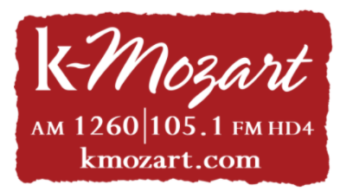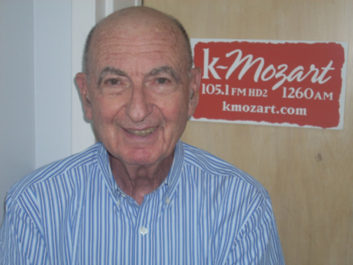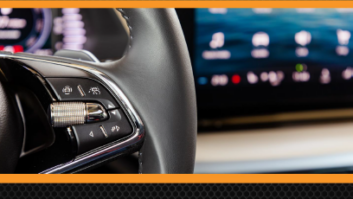 Southern California has a new classical music radio format. It is on the AM dial. And it is broadcasting in HD Radio hybrid mode.
Southern California has a new classical music radio format. It is on the AM dial. And it is broadcasting in HD Radio hybrid mode.
It is a particular combination — classical music, AM and HD Radio — that you aren’t likely to encounter much. But then again veteran SoCal indy broadcaster Saul Levine has never been one to do what everyone else is doing.
As we reported recently, Levine is excited about the possibilities for digital on the AM band, including the recent FCC vote to allow all-digital operation.
Since we posted that story in early November, Levine has flipped his 1260 signal in L.A. to classical music. But while the conversion of a low-rated oldies station back to commercial classical may be interesting, it’s his enthusiasm for doing it with hybrid HD Radio on AM that drew our attention, so we followed up to learn more about his thinking.
Levine went after FM listeners early, founding Mount Wilson FM Broadcasters in 1959 and launching classical on 105.1. He now airs country on that signal, while L.A. area listeners listen to classical on listener-supported KUSC 91.5.
But Levine, now 94 years old, seeks to “revive classical radio in Los Angeles and Southern California” by airing classical music on the 1260 signal. The AM station, until recently called KSUR and airing oldies, is now KMZT, for “K-Mozart.” Its classical format is also heard via its FM translator, online stream, station app and the HD4 multicast of Levine’s 105.1 KKGO.

“Please do not miss the real story that hybrid technology allows KMZT 1260 to compete with a quality signal,” Levine wrote in an email, excited about what he called a virtually noise-free signal.
“HD has been around for a few years. Many engineers were first learning how to utilize it with a learning curve of mistakes to overcome. I now have two engineers who believe in AM HD hybrid and are making it purr like a kitten.”
It’s important to note that the station is not airing all-digital, though the FCC recently began allowing that option for AMs. Levine said he would throw that switch once HD Radio receiver penetration reaches 40 to 50%.
KMZT AM 1260 went on the air in 1947 as a 1 kW daytimer; its four-tower array is on its original seven acres in the San Fernando Valley. It now transmits with 20 kW daytime and 7.5 kW nighttime, with about 9 million listeners nearby. (Like many AMs these days, the site is now surrounded by residential development.)
Levine said the station has experimented with hybrid AM HD for a number of years using Nautel transmitters but that it wasn’t satisfactory and that, at any rate, AM HD was “under attack as a flawed technology.”
Since then, however, the transmitter amplifiers have been replaced; a new engineering team of Dan Feely and Tom White were brought in; new audio processing was installed; and more receivers are in the market. Clarence Beverage of Communication Technologies is the station consultant.
“We kept experimenting with hybrid and getting the audio to sound almost like FM on HD receivers and in stereo. One of the single events in moving us to classical music on AM was the installation of a Telos Omnia.7 processor, which knocked down audio noise in both analog as well as hybrid modes,” he said.
“With new HD radios arriving and FCC support, KMZT was ready to launch on Dec. 1. The audience response was positive and it is now anticipated that in a couple years when hybrid and HD set saturation reaches 40 to 50%, we will move to 100% digital operation.”
The big AM stations in L.A. are KFI and KNX, which are built on news/talk and all-news. KSUR’s oldies format earned only a 0.4 AQH share in the latest numbers from Nielsen Audio (November 2020 PPM 6+ Mon-Sun, 6a-12mid), while Levine’s KKGO FM country station drew a 2.4.
But Levine believes there’s a real opportunity here.
He reiterated that his company has invested about a half million dollars in the AM RF plant. “I consider the investment well spent and encourage AM operators to ignore their CPAs and invest in new equipment and hybrid technology. … The excitement is back in AM radio. Although I am a pioneer in FM radio I see a new opportunity in AM with hybrid HD.”












